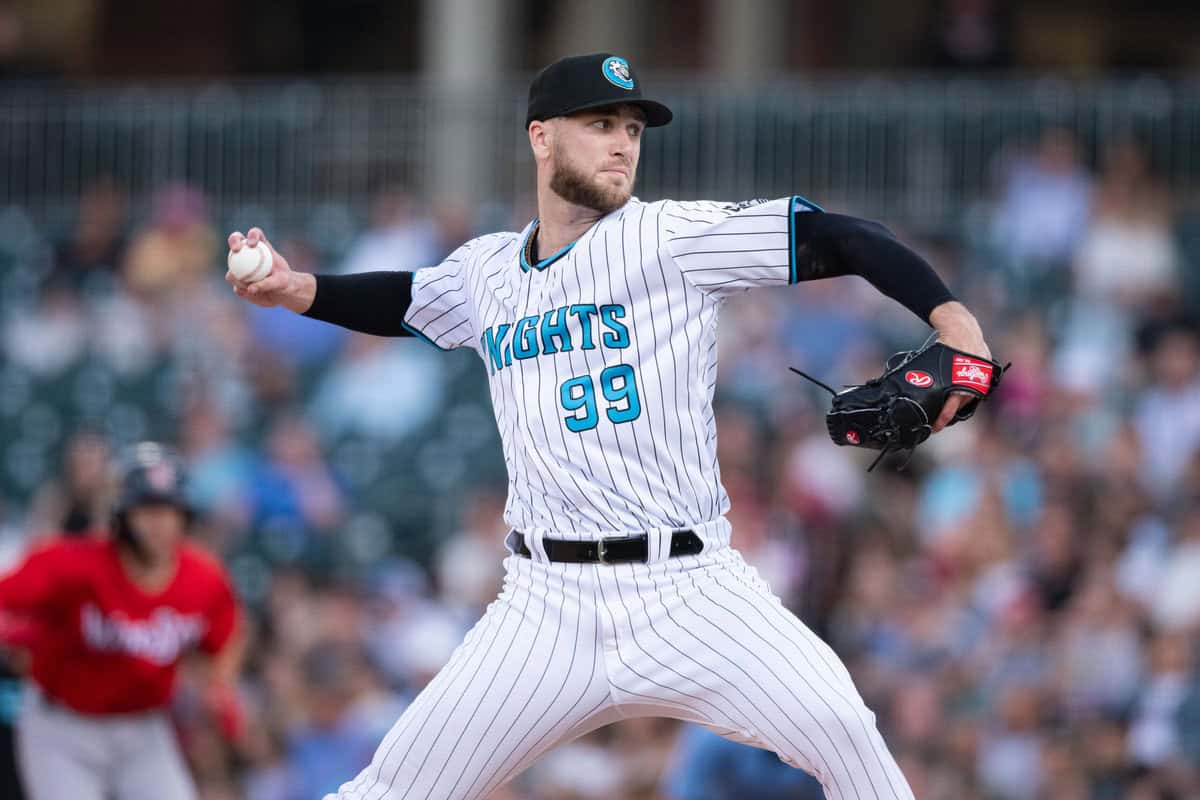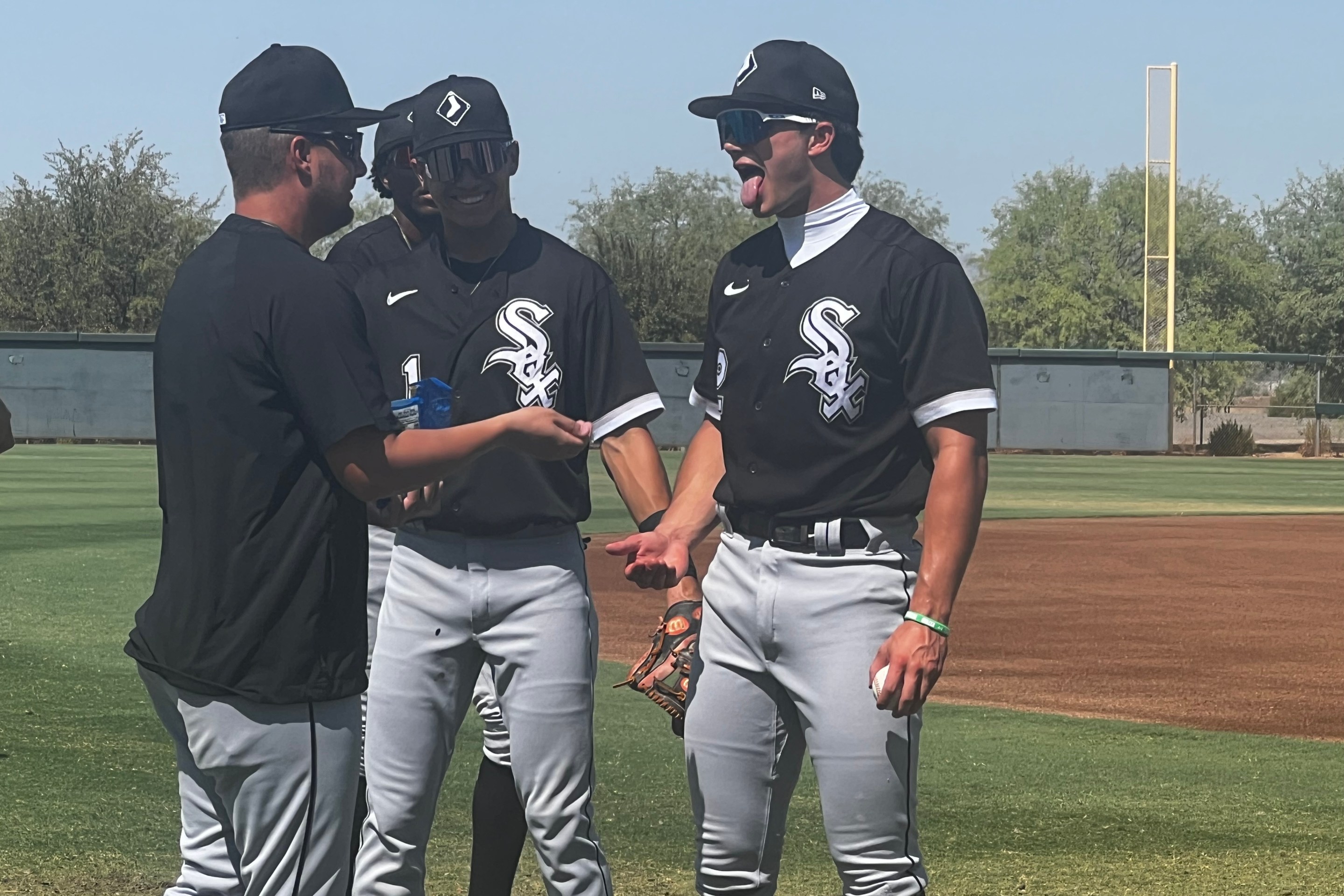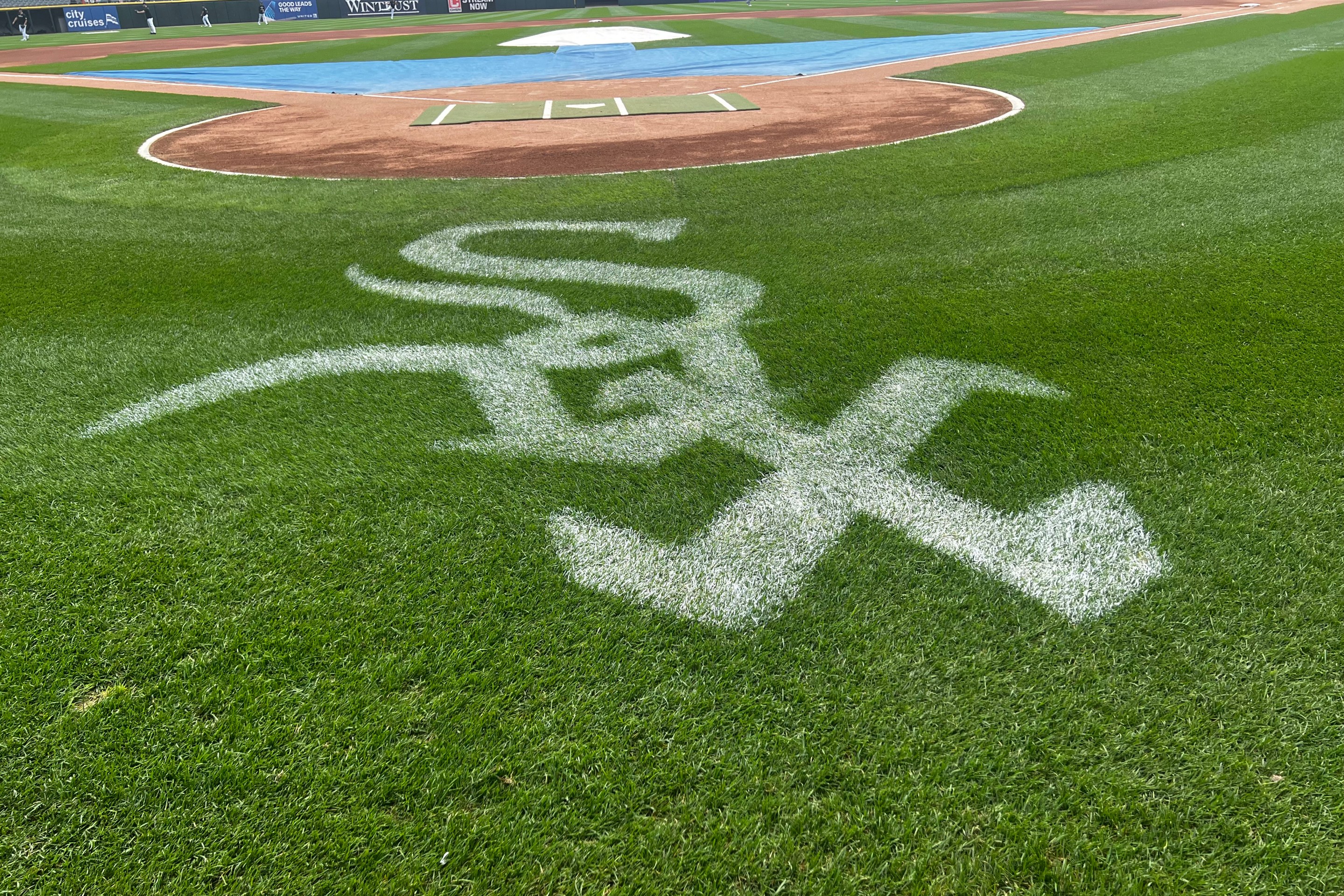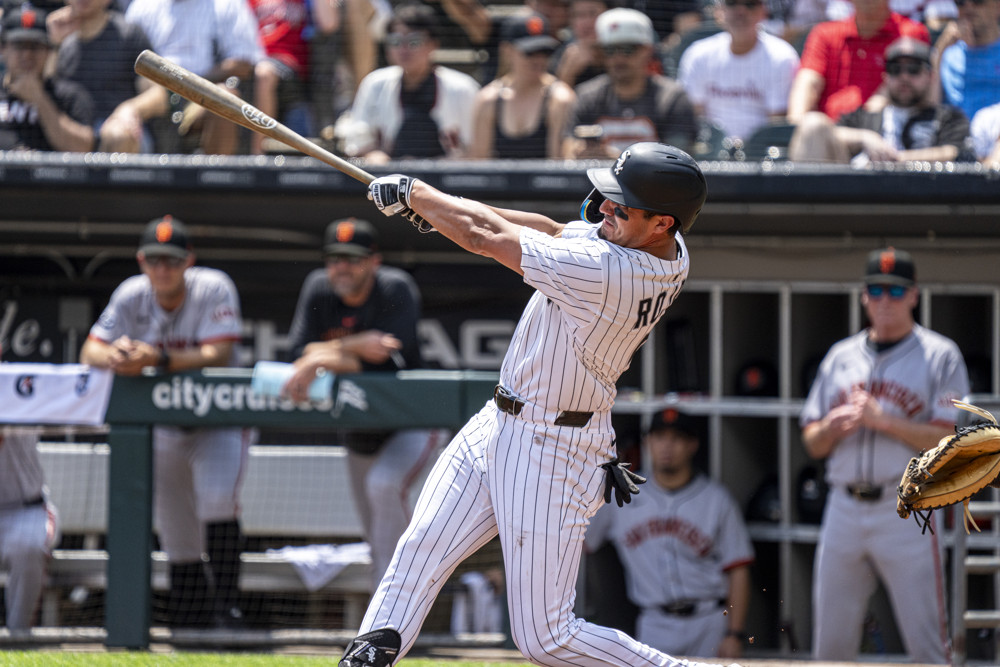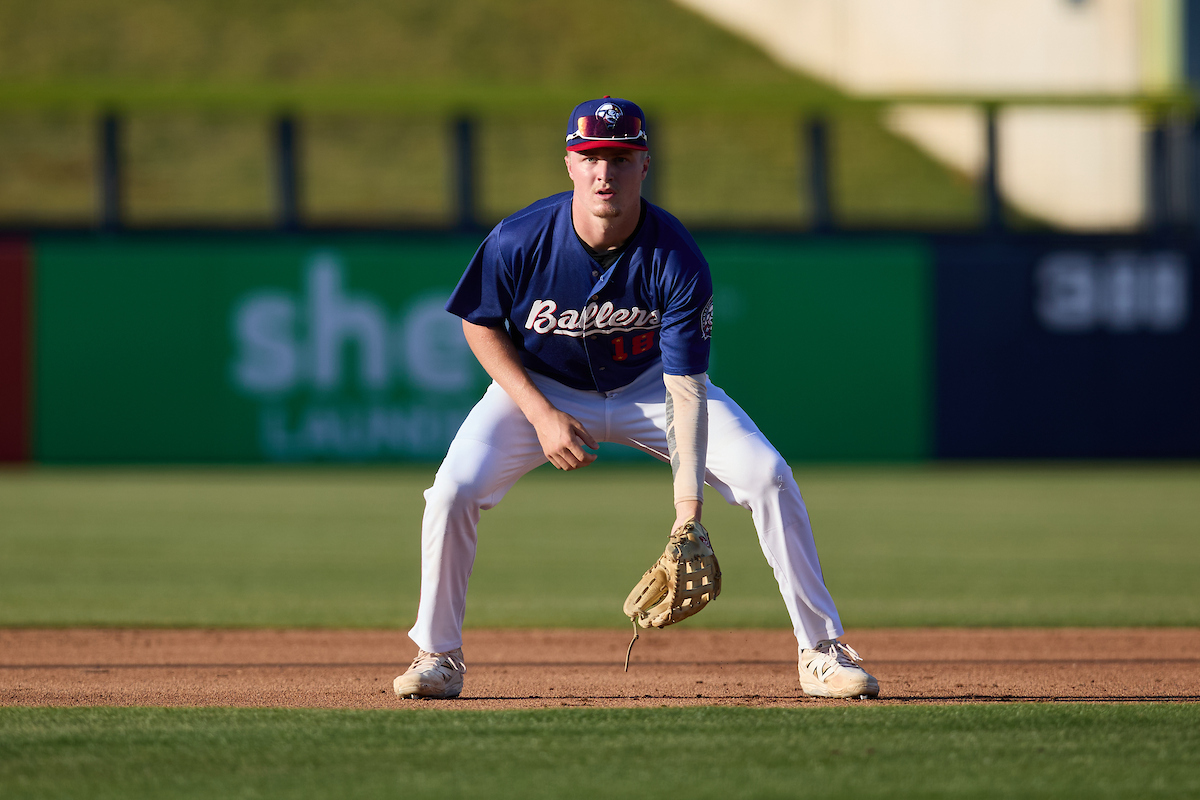White Sox right-handed pitching prospect Grant Taylor sounds pretty cool by description.
He sits in the upper 90s with his fastball, struck out over 40 percent of the hitters he faced in Low-A Kannapolis after missing his junior season with Tommy John surgery, but only made four shortened starts before a lat strain ended his regular season.
While he certainly sounds like someone who should rise quickly once his health allows for his talent to dictate the pace, Taylor's time in the Arizona Fall League next month might be the first opportunity to really see the former second round pick pitch beyond 15-second highlight clips. Or maybe it will just provide for more 15-second highlight clips.
Either way, it felt important to talk to someone who's more familiar with his arsenal and pitch data.
"He's electric," said Brian Bannister. "It's big, outlier extension [in his delivery]. He was getting at least seven and a half feet of extension. So when you see a lat injury for a pitcher who is way out there, it makes sense."
For reference, Garrett Crochet is listed as three inches taller than Taylor and averages 7.1 feet of extension on his delivery, which Statcast rates out as 93rd percentile. So while it explains why Taylor's lat is a touch point going forward, it also explains why his velocity gets touted so much, because he's releasing the ball so close to the plate that 99 mph is playing as dominant as it sounds.
"It's kind of that tricep dominant four-pitch arsenal, potentially five depending on the shape of his breaking balls," Bannister said. "We're getting more tools I feel like by the year on developing changeups for the guys that can really spin the ball. But the classic tricep arsenal is power cutter, slider, big curveball, and then not necessarily a depth changeup, but a velo-differential changeup. So you kind of see that arsenal, but he's already got some really nice pitch shapes. He's in good areas, so I think there's ways to teach him to really take advantage of his ability to spin and his velo."
In maybe some more laymen's terms, "tricep dominant" is how Bannister described Davis Martin's arm action, shortly after arming him with a kick change -- a grip-and-rip pitch rather than asking him to pronate his wrist.
It's too early to compare Taylor that specifically to Martin, and Bannister clearly wants more time to see how Taylor operates before prescribing specifically what his best changeup should look like. But there's a general archetype here of a right-hander who has enough feel for spinning the ball that he should be able to wield multiple breaking balls, on top of the raw ingredients for an overpowering fastball.
The Arizona Fall League has become a haven for prospects who missed developmental time due to injury in the regular season, so it's natural that Sean Burke is also headed to Glendale next month. Recovery from shoulder inflammation means that he didn't get to Triple-A Charlotte until Memorial Day weekend, really only has been allotted full-length outings for the past two months, and is still sitting at just 66⅔ innings for the year.
Burke's last six outings haven't exactly had a major league-ready look to them due to inefficiency keeping him from finishing the fifth all but one time, but he's also struck out 40 of the 110 batters he's faced in that span. Like many a Sox prospect arm this year, when we last saw Burke in Charlotte he was raving about the recent installation of a changeup that finally made sense for his natural inclination to supinate his wrist.
"There's a lot of physicality there, there's exciting spin talent, and so many of the things in modern pitching development are solving for one ancillary problem," Bannister said, and in Burke's case it's establish a pitch that can move to his arm side, his new seam-shift changeup.
Bannister likes citing Martin because changes that immediately click for pitchers are perfectly examples of finding solutions that fit what they're already doing physically. But Burke still getting the hang of how to use it, while he's still unabashedly enthusiastic about it, is a more typical progression.
"There's never a clear-cut timeline on things," Bannister said. "There's an education component, there's a pitcher buy-in component. There's a phase where you iterate through different ideas and if you do hit on something, you're able to take it out into games and figure out how does it work competitively. Can I execute it? Can I avoid tipping with it? Is it better versus righties? Is it better versus lefties? You start building up your sample size with it. He's an exciting talent from a physical, velo and spin component and with being able to add in the little final touches, I think he's going to be a big contributor."
Jim already witnessed Noah Schultz mixing in top of the zone four-seamers to counter the high contact rate on his natural two-seam fastball, and spoke to Barons pitching coach John Ely about it. That lines up with what Bannister said on the matter, which is not to deny the lack of swing-and-miss Schultz's primary pitch, but tout his aptitude for doing different things that will make him less reliant upon it.
And in a 2024 season where Schultz is mostly tasked for building up strength and stamina and happens to be dominating alongside of it, a repeated emphasis from Bannister is they haven't really asked the 21-year-old to add features to his arsenal as much as they will down the road.
"The thing I've been impressed by him, being such a large pitcher, is he actually has a lot of shapes that he can produce," Bannister said. "Shapes that he's not even consistently throwing right now but when I asked him to demonstrate, he definitely has the ability to do it.
"You can go around the league and see guys that are breaking in, and at one point I'd question their fastball quality and the contact rates. You've seen them creatively adapt either by throwing less fastballs and adding a cutter, or a splitter, or some other bridge pitch or contrast pitch. And they've been able to solve for the fastball contact rate. [Schultz is] such a unique build of a pitcher and just being a power lefty, I think there's a lot of things we can do if the answer is not in the fastball shape, in how we support the fastball shape."
Schultz is striking out 29 percent of Double-A hitters, has an otherworldly slider and became of legal drinking age last month, so it certainly can feel a little silly to ruminate on what he needs to do to miss more bats. But with the expectations placed on the top prospect tasked with upgrading the worst major league team ever, figuring out how to build weapons around his slider is necessary to hit his sky-high ceiling. A cutter has already been in the works.
"You love the power, you love the strike-throwing ability and his repeatability for being such a tall guy," Bannister said. "There's multiple ways to solve for it and I think the league has proven that every year."
